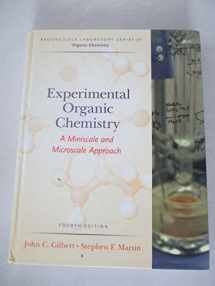
Experimental Organic Chemistry: A Miniscale and Microscale Approach
Book details
Summary
Description
This proven and well-tested laboratory manual for organic chemistry students contains procedures for both miniscale (also known as small scale) and microscale users. This lab manual gives students all the necessary background to enter the laboratory with the knowledge to perform the experiments with confidence. For the microscale labs, experiments were chosen to provide tangible quantities of material, which can then be analyzed. Chapters 1-2 introduce students to the equipment, record keeping, and safety of the laboratory. Chapters 3-6, and 8 are designed to introduce students to laboratory techniques needed to perform all experiments. In Chapters 7 and 9 through 20, students are required to use the techniques to synthesize compounds and analyze their properties. In Chapter 21, students are introduced to multi-step syntheses of organic compounds, a practice well known in chemical industry. In Chapter 23, students are asked to solve structures of unknown compounds. The new chapter 24 introduces a meaningful experiment into the textbook that reflects the increasing emphasis on bioorganic chemistry in the sophomore-level organic lecture course. This experiment not only gives students the opportunity to accomplish a mechanistically interesting and synthetically important coupling of two a-amino acids to produce a dipeptide but also provides valuable experience regarding the role of protecting groups in effecting synthetic transformations with multiple functionalized molecules.


We would LOVE it if you could help us and other readers by reviewing the book
Book review



